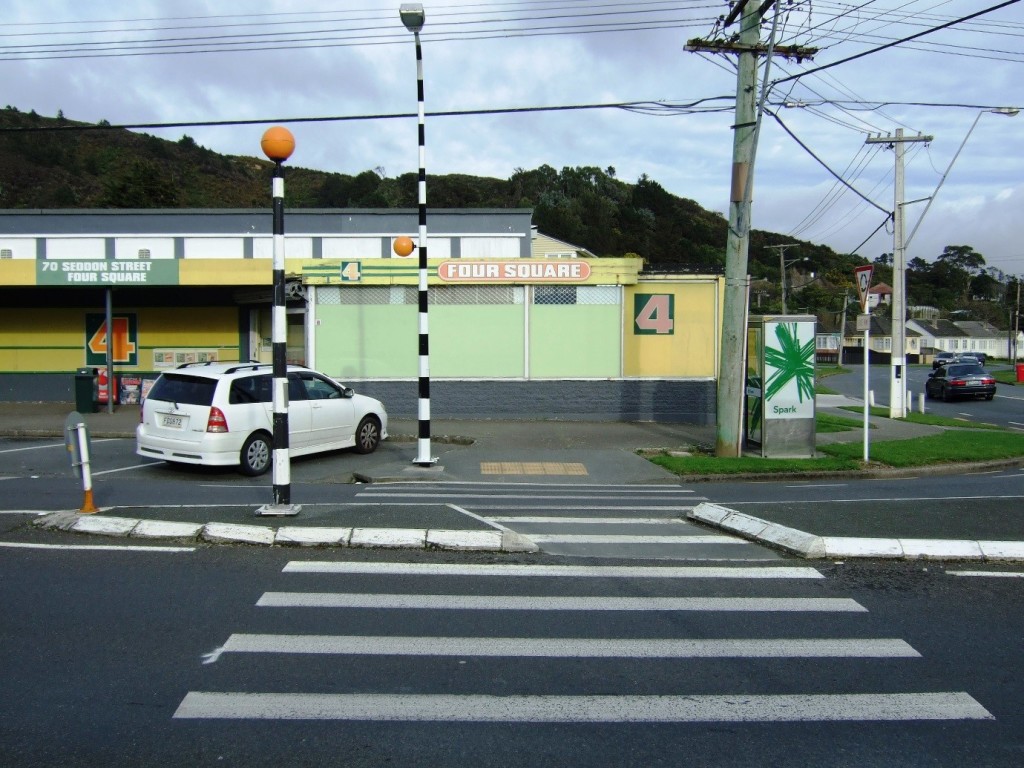
Their faces responded to the projected image of ‘my favourite local building’ all too predictably: surprise cycling through shock, disappointment, confusion. A small bit of Architecture had just died and they were sharing the stages of grief; denial (NO, NO, NO), a little anger (this shabby toilet block?), bargaining (maybe, if . . . ) on to depression (oh God, he’s serious) and, finally, the inevitable acceptance that I wasn’t going to stop talking until they agreed (enough already). The scene of their discord was a photograph of the Seddon Street shops in Naenae.
To be truthful I had chosen a particularly unflattering elevation for dramatic impact, but there is little to argue that it presents as a tough building in a suburb on the uncomfortable side of a significant socio-economic divide. It wasn’t meant to be this way. During its development, in the early 1940s, the concept for Naenae had a minor dalliance with principles of cooperative socialism. The ideological suitor was William Robertson, a Canadian whose earlier plans for a Utopian community in Golden Bay had been thwarted by the beginning of the Second World War.
In Naenae he envisioned a largely self-sufficient cooperative society whose economic activities would be focused around the local shops. Ironically his grand vision here was ruined by the end of the war when the scale and urgency for housing overwhelmed Robertson’s marginal political influence. He wrote a lengthy ‘Final Statement’ blaming Walter Nash for Naenae’s undoing and soon after threw himself in front of a train at Melling Station (my second favourite local building). A glimpse into what might have been can be found in a photograph of the Seddon Street shops taken as they neared completion in July, 1946. As painters put the finishing touches to the building the large display windows proclaim ‘bread available.’ Meanwhile the footpath is congested with wicker prams marking the beginning of a certain generation who continue to park badly.
Ian Reynolds favourably reviewed the Seddon Street cooperative shops, finding in the simplicity a ‘visual surprise’ in an otherwise ‘riotous’ landscape. It is, he said, “a good looking building – in spite of its context.”
I frequently stop at the Seddon Road shops. Sometimes I stop as a small homage to a Canadian who cared too much for the wellbeing of suburban New Zealanders, but mostly I stop because it is a convenient diary. Bread is still available – along with lollies, beer, cigarettes and lotto tickets – but today it is not a good looking building. Decades of neglect and disregard have ensured that it has slipped exactly into its context. And yet there it still stands, a decayed artefact of a social experiment that isn’t quite yet finished in Lower Hutt. It is not a good looking building at all, but it is a fine example of architecture. Such a difference between building and architecture was a bit lost on a new generation of architecture students. With hindsight I should probably have shown them Futuna and left it at that.

Peter Wood
The “My favourite modernist building …” series is in support of Gordon Wilson Flats which is facing threat of demolition.

Leave a Reply